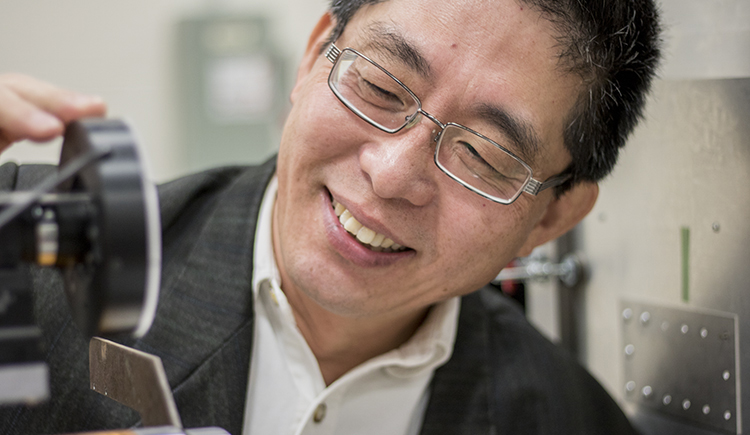Research

Our faculty and graduate students are addressing aerospace’s big challenges by partnering with industry and government to develop solutions in propulsion, aircraft performance, robotic systems, composite materials, nanotechnology, space systems engineering and energy and environmental systems. From an aircraft wing that morphs, to advanced quality control through 3D printing, to star-tracking systems that improve spacecraft navigation, revolutionary research is happening every day in the Department of Aerospace Engineering.
From wind tunnels to flight simulators, Toronto Metropolitan University’s laboratories and facilities give you the opportunity to perform sophisticated aerospace research and experimental investigation.
Principal Investigator: Seyed Hashemi
ENG-B13
ANCVL is used for research in the area of vibration modelling and analysis of lightweight structures, and is equipped with state-of-the-art hardware and software testing equipment, including a non-contact laser vibrometry and data acquisition system.
Principal Investigator: A. Emre Karatas
KHE-023
This large laboratory houses two principal areas for undergraduate experiments in aerospace propulsion and aerospace-related heat transfer. On the propulsion side, a 40-lbf-thrust turbojet engine/test cell will enhance your understanding of gas turbine engine operation. Additionally, propulsion systems in the lab include a small pulsejet engine and cold-flow rocket. On the aerospace heat transfer side, two experiments are available to you: a thermal conductivity experiment and a forced convection experiment that are tied to aerospace temperature-control applications.
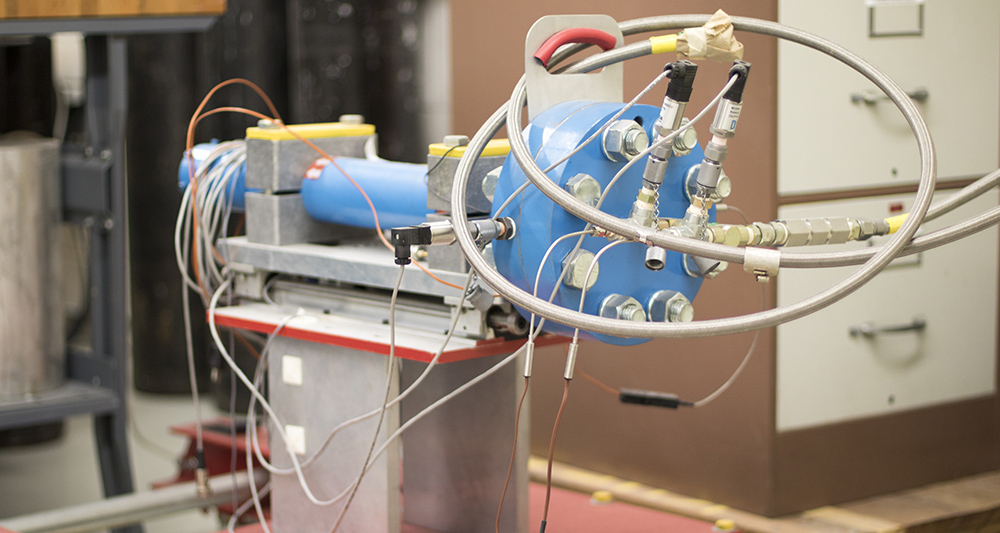
ENG-132
Primarily an undergraduate facility, the stress analysis laboratory is used for the application of strain gauges and photoelasticity in stress analysis of components and structures. Major equipment includes a hydraulic pump, a pressure vessel, two transparent type polariscopes, two small reflective type polariscopes, two load transducers and three static strain gauge indicators. The technology enables you to learn about the principle of strain gauge layup and circuitry, the application and detail design of strain gauge–based transducers, and the theory and application of photoelasticity.
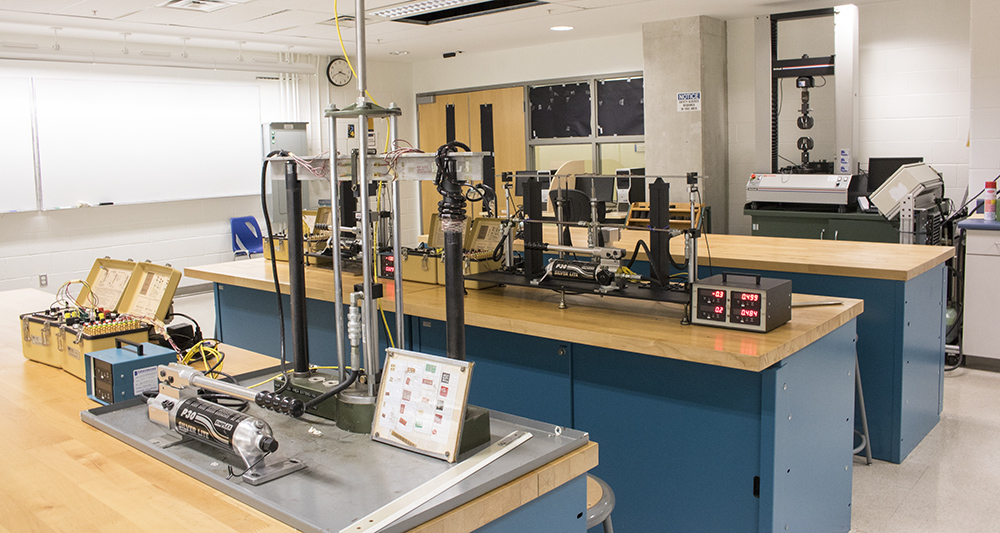
Principal Investigator: Bassam Jubran
KHE-033
In ATML you’ll conduct cutting-edge research related to the design and testing of new, innovative cooling techniques for gas turbine blades and micro-thermal management devices for avionic systems. The lab’s facilities include a subsonic wind tunnel, a hot wire anemometry system, and computational fluid dynamics software

Principal Investigator: Goetz Bramesfeld
KHE-33
Ongoing research in this lab includes applied aerodynamics and aircraft design with a primary focus on small unmanned aerial vehicles. The research goal is to improve the understanding of the aerodynamics and flight dynamics of small- and micro-aerial vehicles in order to advance their effectiveness. As an undergraduate or graduate student, this lab is available to you for research involving simulations, analysis, wind-tunnel tests (via the facilities in KHS-37) and flight experiments.
Visit the Applied Aerodynamics Laboratory of Flight (opens in new window) website.
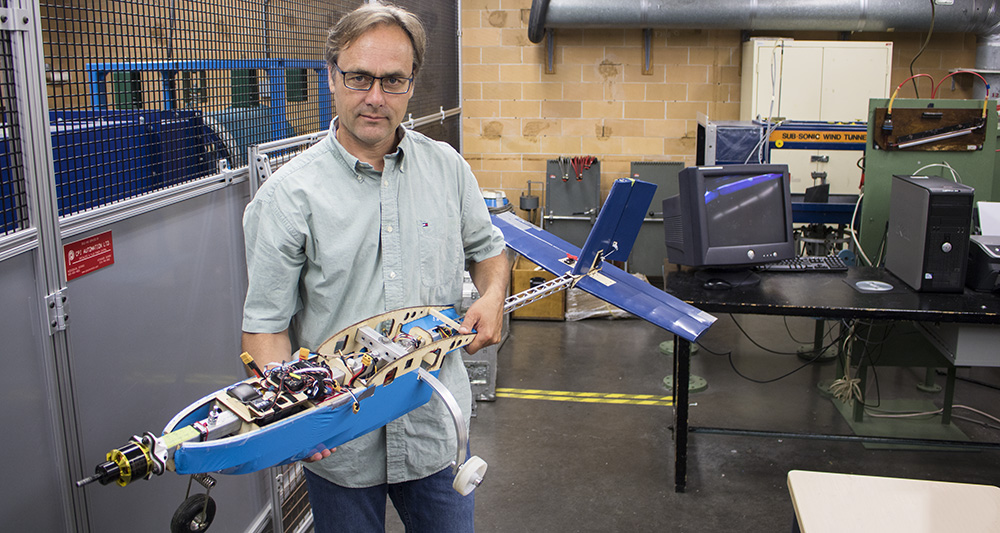
Principal Investigator: Krishna Kumar
EPH-102
In this lab you have access to a Big Data analytics platform of high performance computers, as well as a suite of Artificial Intelligence algorithm software. This technology enables you to conduct cutting-edge research on machine learning, Big Data analytics and real-time predictive analytics for applications to aerospace and allied fields.
ENG-157
ACE is a self-contained modular satellite attitude motion and control test bed. The platform bus provides a close emulation of the frictionless environment of space and physically resembles a microsatellite in the 50kg mass range. External appendages may be attached to provide low-frequency, flexible response, or removed to mimic a rigid spacecraft. Onboard systems include batteries, a reaction wheel, a bidirectional thruster, angular and rate sensors, and more. Host software supports user-developed control programs with executive system control and monitoring provided by an external user-interface computer.
Principal Investigator: Reza Faieghi
CUI-214
AIM Lab conducts theoretical and experimental research on the perception, motion planning, and navigation of connected autonomous vehicles, including drones and cars. The main research themes are robotics, machine learning, and virtual reality. The AIM Lab also explores the application of such technologies in other aerospace applications such as smart aircraft interior design.
KHE-128
You’ll experience an intensive flight simulation environment in this laboratory. Outfitted with PC stations equipped with control/wheel columns and rudder pedals as add-on hardware, a wide variety of air and space flight vehicles can be operated in simulation, providing you with information on flight performance characteristics and cockpit instrumentation display. X-PLANE flight simulation software, as well as the MATLAB/Simulink graphical programming environment, is available.
Principal Investigator: Bo Tan
KHE-27
A Class-2 tissue culture laboratory, this facility is equipped to culture mammalian cells, cancer cells and mesenchymal stem cells. The equipment includes a state-of-the-art centrifuge, Class-2 bio-safety cabinet, a CO2 incubator for the maintenance of cells, a fluorescence microscope, and an inverted microscope for monitoring cell growth and tracking cell viability.
Principal Investigator: A. Emre Karatas
KHE-23
The research in this lab aims to help better understand combustors in energy systems and gas turbine engines. The lab houses several laboratory scale burners to study flames under controlled conditions. Currently there are two main research topics: (a) soot formation and oxidation in laminar diffusion flames and (b) flame extinction characteristics of biofuels. The lab's capabilities include state-of-the-art optical diagnostics using lasers and high speed sCMOS cameras and physical sampling using TEM grids. Advanced image processing and data analysis algorithms are used to handle large data sets.
Visit the Propulsion and Clean Energy Research Group website.
Principal Investigators: Zouheir Fawaz, Cheung Poon and Kazem Fayazbakhsh
ENG-B13, ENG-B14, ENG-B15
FRAMES is a leading-edge centre of innovation for aerospace materials and structures that enables unique research collaborations with the burgeoning aerospace industry in Ontario and Canada. A 5000-square-foot, double-height, temperature-controlled laboratory space, FRAMES is designed for full-scale structural testing of aerospace components. It is equipped with a self-reacting modular load frame, an epoxy-coated strong floor with two embedded T-groove mounting plates and multiple hard points, an MTS 12-channel controller, seven linear fatigue-rated hydraulic actuators and one rotary hydraulic actuator. FRAMES also has an air gun for high velocity impact testing, and a 3D printer.
Visit the FRAMES website.
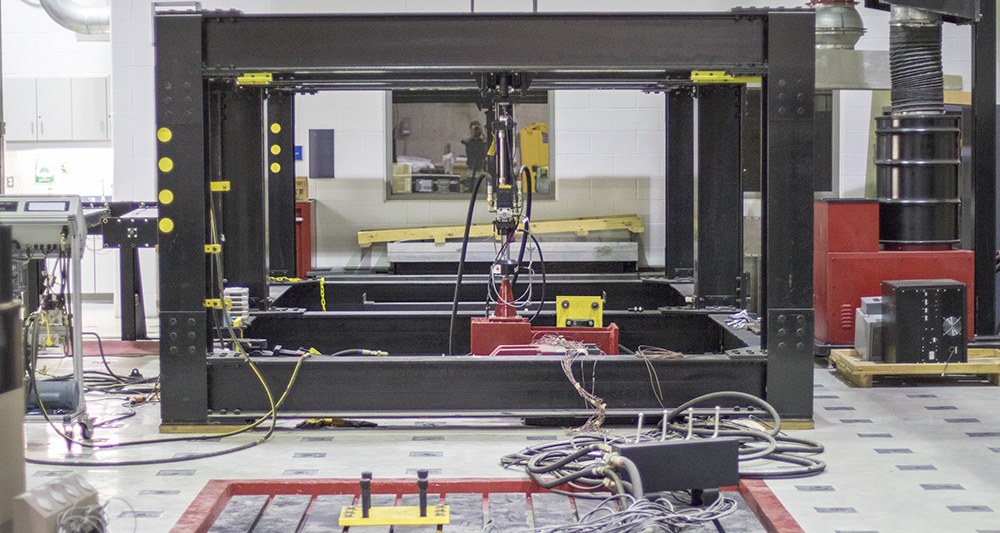
ENG-124
This lab is equipped with the facilities you need to understand a number of subjects, including hypersonic aerodynamics, high-speed propulsion, viscous boundary layers that develop over all aircraft and shockwaves, and basic fluid dynamics. It features a high-speed wind tunnel capable of speeds up to Mach 2, and two five-cubic-meter storage tanks filled with high pressure air. Also featured are precision optical glass, a Schlieren photography system, and pressure taps.

Principal Investigators: Fengfeng (Jeff) Xi and Puren Ouyang
EPH-107, EPH-107A
In the ISRMM laboratory, cutting-edge research is conducted on the automation of two main manufacturing operations: 1) the finishing process, such as polishing and deburring, for component making, and 2) the assembly process, such as riveting and fastening, for assembly of interior and structure components. For finishing research, the laboratory is equipped with a polishing/deburring parallel robot with a hybrid toolhead, a precision deburring machine, and a three-module reconfigurable robot for belt polishing. For assembly research, the lab features a riveting/fastening robotic cell, a high-resolution 3D position measurement system (Big 3D Creator FP 70000), and a robotic motion simulator. The lab also has a testbed for aircraft wing morphing research and an aircraft cabin module for seating comfort research.
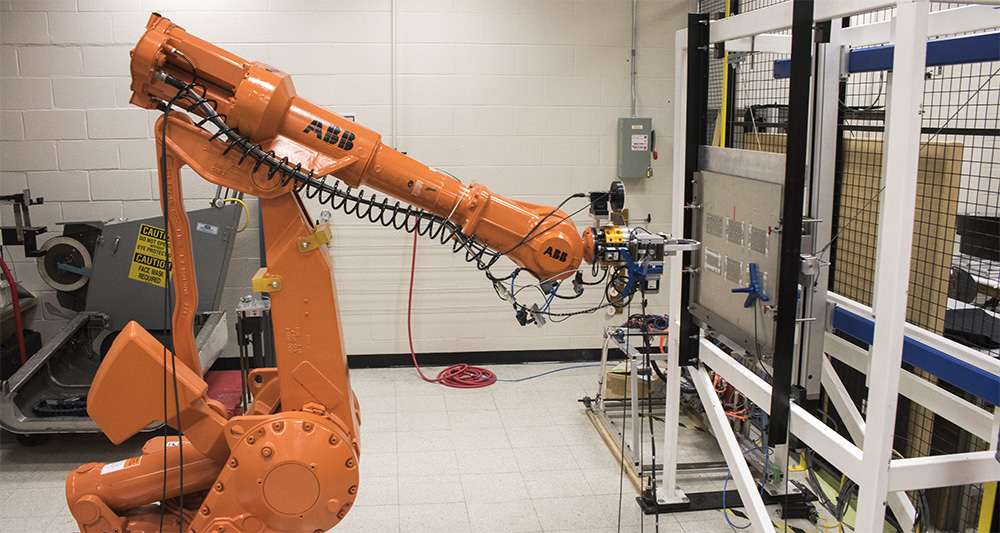
KHS-037
Winds can reach roughly 160 km/h in this well-equipped, closed-circuit subsonic wind tunnel. Measuring five by 13 metres, with a test section of one metre square, two main tests are done in the tunnel — force and pressure. As an undergraduate, you can get access for supervised use, although it is mainly used by graduate students who perform work on professors’ aerodynamic-related research projects.

Principal Investigator: Joon Chung
BTS-160
Equipped with user-friendly virtual and augmented reality gear, MIMS is the ultimate lab for aircraft designers. The technology includes a two-seat MaxFlight Full Motion Simulator with 360-degree pitch and roll, a fixed-based flight simulator, and Oculus Rift and Microsoft HoloLens goggles. Ongoing research projects include the development of a flight test data analysis system, and a tool for determining optimum cabin layout configurations for commercial aircraft.
Visit the Mixed-Reality Immersive Motion Simulation Laboratory (opens in new window) website.
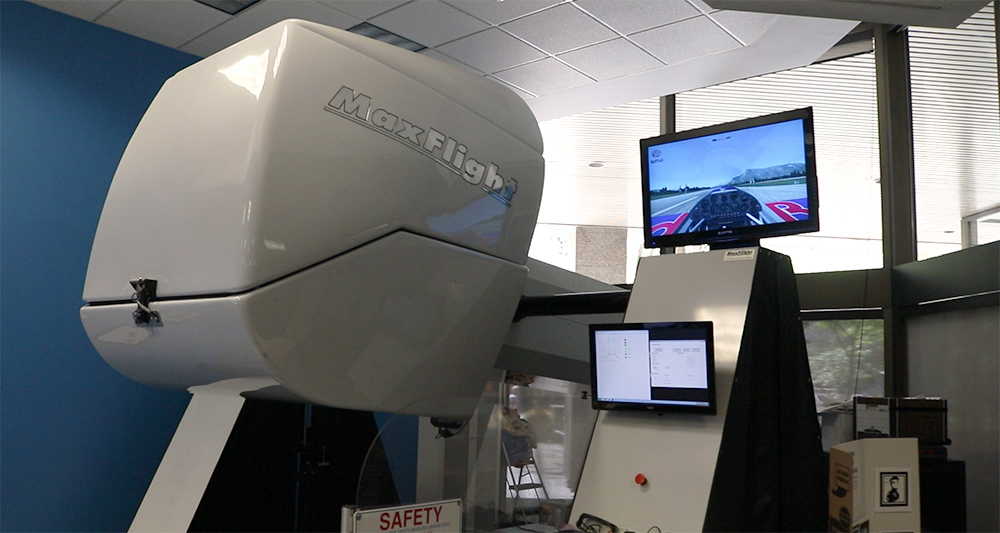
Principal Investigator: Bo Tan
KHE-128
This lab features a scanning electron microscope and a fluorescence microscope, which are used to characterize the interaction between nanomaterials and various cell lines.
Director: Paul Walsh
Downsview Park
This 7000-square-foot facility provides you with access to research facilities in aircraft cabin technologies related to seat development, interior lighting, environmental controls and cabin materials. Aircraft cockpit optimization is done using a simulator, and a flat table to simulate a two-dimensional frictionless space environment can be used to develop satellites and star-tracking technologies. Wind tunnel facilities are also available for the development of automated flight platforms.
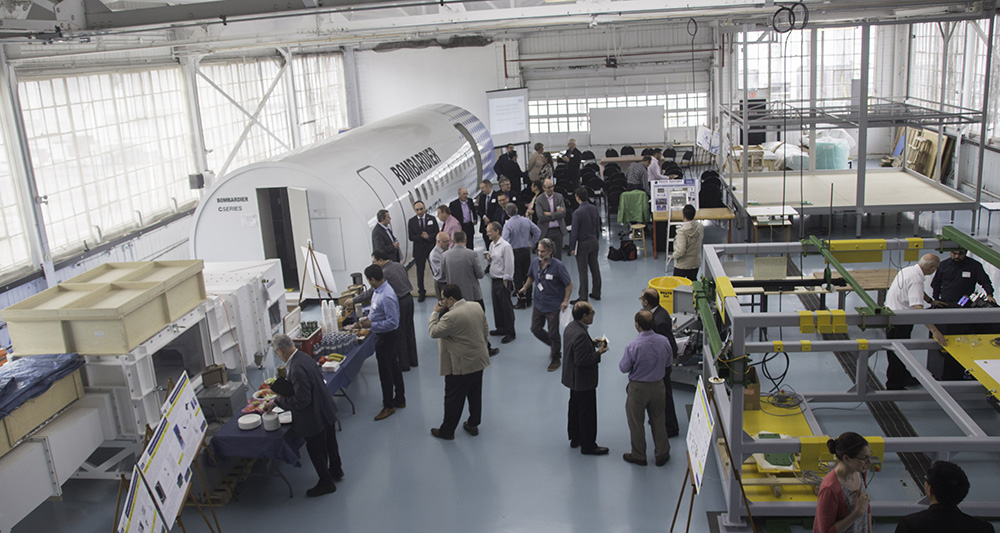
KHE-033
This wind tunnel is meant to test smaller aerodynamic components that are found on unmanned aerial vehicles (UAVs). UAVs can experience low reynolds number, aerodynamic issues, which can be explored thoroughly using this facility.

Principal Investigator: John Enright
EPH-132
SAIL is used to study navigation sensors that estimate a spacecraft’s attitude by measuring the angle between an external target and one or more satellite axes. SAIL’s test infrastructure includes a three-axis rotary motion platform, data collection electronics, and a number of devices that simulate the observable properties of the sensor targets, such as the Earth, the Sun, or stars.
Principal Investigator: Krishna Kumar
EPH-102
This lab is configured for conducting space electronics assembly and testing for the development of cutting-edge technologies in Internet-of-Things and wireless sensor networks for space and terrestrial applications. Specialized facilities include a high precision soldering station, a high-precision microscope, and a portable vibration calibrator.
Principal Investigator: Krishna Kumar
ENG-157
As a graduate or undergraduate student, you’ll work alongside world-class researchers in this lab to develop the next generation of satellite technology and intelligent systems, including micro- and macro-satellites, and solar-power satellites. The advanced technology in the lab includes a satellite formation flying simulator, an inflatable structure testbed, a single-axis attitude simulator, and a ground station that provides ultra-high frequency/very-high frequency communications with low earth orbit satellites.
Visit the Space Systems Dynamics and Control (SSDC) Laboratory (opens in new window) website.

Principal Investigator: Guangjun Liu
EPH-100 and EPH-343A
The research in this lab combines expertise in the areas of control systems, robotics, aircraft systems and mechatronics. Projects include the development of modular and reconfigurable robots, mobile manipulator modeling and control, microRover robot arm, aircraft engine bleed-air systems control, and aerospace system prognostic health management and condition-based maintenance. The lab is equipped with various robots, and a test rig for aircraft systems research.
Visit the Systems and Control Laboratory (opens in new window) website.

Principal Investigator: Bo Tan
EPH-339
This lab features an ultrafast laser of mega-hertz pulse frequency and an atomic force microscope. The laser is used to synthesize functionalized nanomaterials for biomedical applications, and the unique high-pulse frequency enables the generation of quantum-sized nanomaterials. Current research in this lab is focused on exploring the potential of these nanomaterials for biomedical applications, including surface-enhanced Raman scattering for biochemistry detection and chemical trace detection, cancer diagnosis and therapy, and antibacterial agents for self-cleaning.
